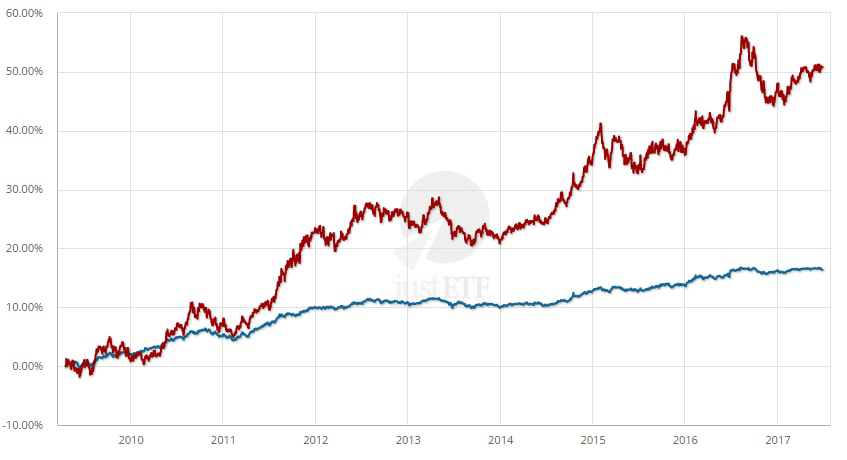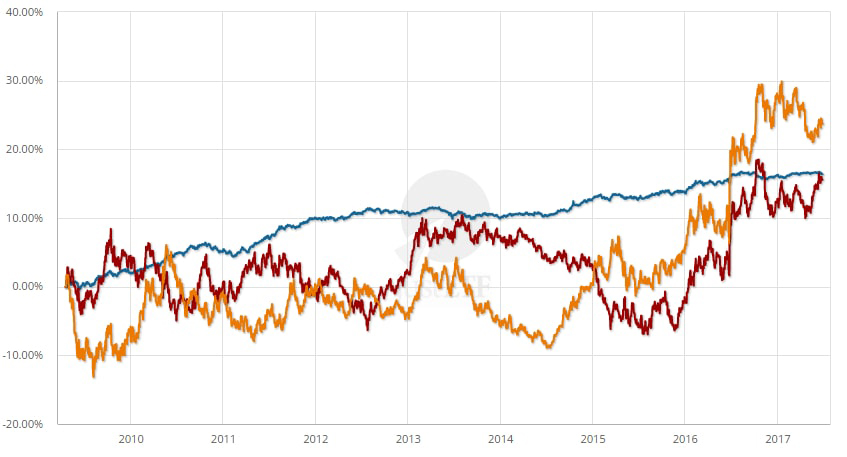
Government bonds are debt issued by sovereign governments such as the UK, the US, Japan, India and so on. Where there are governments, there are usually government bonds. Why? Because governments love spending money. Especially money they haven’t got. It may be a nuclear power station here, a social programme there, oops, we’ve got a small war to pay for and completely forgotten about the gas bill.
Essentially governments can make themselves popular by popping life’s little extras on credit now and leaving others to worry about it in 10, 20 or 50 years time when the loan comes due.
Those loans often come in the shape of government bonds which promise to pay you back interest every year (the bond’s coupon rate) and the full amount borrowed (the bond’s face value) at maturity.
And that makes a lot of sense for government and investors. During a recession, demand from private individuals and corporations drops, as does government income from tax. But the government can plug the gap and keep people in work by issuing lots of bonds that raise funds to, for example, renew the national infrastructure, or keep paying for the NHS.
Investors are happy to lend to stable governments like the UK because they have faith that the country will still be standing and paying them a reliable source of income many years into the future.
This relationship has created a huge global bond market – far bigger than the equities market - and government bonds are the largest, most important and liquid part.
It probably comes as no surprise that the world’s superpower and biggest debtor nation, the US, is the major issuer of government bonds. The strength and stability of the US is such that their bonds are often thought of as the safest asset available. Although no asset can ever be truly risk free (see below).
Japan is the second largest government bond junkie - a testament to its economic strength, aging population and 25-year struggle with low growth.
After Japan and China comes a clutch of large European nations: UK, Italy, France and Germany who were forced to ramp up their debt levels to maintain growth in the aftermath of the Great Recession.
What are the benefits of government bonds?
Investors particularly value high-grade
government bonds because they are the best available complement to equities.
Government bonds returns tend to be more stable than equities and often perform better during recessions.
That stability, especially in a crisis, reduces portfolio losses and prevents many investors from panicking when their equities plunge.
Having a sizeable slug of government bonds in your portfolio is the essence of diversification. Bonds can be used as a reliable source of funds when bills need paid and equities are down, and they can also be used to buy more equities when prices are cheap.
The reason that high-grade government bonds bear up well in turbulent times is because they are backed by strong nations. The US and UK have never defaulted on their debts. Whereas companies can go bust, a developed nation that has survived World War, rampant inflation and Great Depression is a good bet. Investors believe these countries will manage their finances prudently in the future and so flock to them as safe havens when the global economy is threatened.
Developed nations are likely to keep paying income to investors for the foreseeable future and if interest rates fall then you can even make a capital gain as bond prices rise.
Benefits of having high-grade government bond ETFs in your portfolio
- Diversification benefits
- Stability during recession periods
- Price increase when interest rates fall, inflation lowers and/or home currency weakens against bond currency
What are the risks of government bonds?
However, in the current low interest rate environment, many assume that rates must rise which will cause bond prices to fall. Falling bond prices inflict capital losses on bond investors although they are only temporary for bond ETFs. That’s because ETFs automatically buy new higher-yielding bonds that eventually make good the loss by reinvesting more income into cheaper bonds.
Remember though, interest rates are not guaranteed to rise just because they’ve hit historical lows. Japan’s rates have not recovered in over a quarter of a century. If you don’t believe that can happen here then you can minimise the risk of rising rates by investing in a
short-term government bond ETF.
Short-term vs. long-term government bond ETFs
![Short-term vs. long-term government bond ETFs]()
Long-term UK government bond ETF
Short-term UK government bond ETF
Source: justETF.com; 17/04/2009 - 26/06/2017
A rise in interest rates would at least solve the problem of the rock bottom coupon payments that are currently offered by government bonds. Bonds yield more as rates rise, and this would enable them to return to their traditional role as a source of decent income.
Inflation risk is another issue for government bonds - the chance that your bond returns don’t keep pace with inflation. Low yielding bonds are particularly vulnerable to rapid and unexpected increases in inflation. Solutions include diversifying into:
- Inflation-linked bonds that are specifically designed to match inflation hikes.
- Commodities that have historically done well in high-inflation environments.
- Short-term bond ETFs that rapidly replace low coupon bonds with higher yielding versions as interest rates rise.
- Relying on equities and property holdings to outpace inflation as they have historically done so over time.
Credit risk is another trap for the unwary. This is the risk that a government defaults on its debt and fails to pay you back as promised.
You can minimise this by investing in government bonds of high quality: look on your bond ETF’s factsheet for average credit ratings of AA- and above.
The final thing to think about is
currency risk. Government bonds are meant to be a source of stability but foreign bonds add currency market volatility into the mix.
This can swing both ways. If the pound drops 5% against the dollar then a US Government bond fund will appreciate by 5% regardless of the performance of its underlying asset.
Equally, a strengthening pound will detract from the performance of overseas assets.
Short-term UK vs. short-term foreign currency government bond ETFs
![Short-term UK vs. short-term foreign currency government bond ETFs]()
Short-term Euro government bond ETF
Short-term UK government bond ETF
Short-term US government bond ETF
Source: justETF.com; 17/04/2009 - 26/06/2017
Currency risk adds an extra dimension of diversification for a global equity portfolio that’s up and down like a lift in the Burj Khalifa anyway.
But it’s best avoided in the minimal risk portion of your portfolio. You can solve this part of the puzzle by investing in government bonds valued in your home currency or ETFs that hedge overseas assets back to the pound.
Risks associated with government bond ETFs
- Rising interest rates
- Increasing inflation
- Default or decreasing credit quality of the bond issuer
- Stronger home currency (GBP) and weaker bond currency
Government bond diversification
The flipside is that you can maximise
diversification by investing in government bonds that offer larger yields in different currencies and across a range of maturities. Emerging market government bonds are particularly useful here and can be valued in their local currency or the US dollar.
How does this tally with minimising currency risk? You square the circle by allocating government bonds that are exposed to currency risk to the growth / equity portion of your portfolio. Their job is to diversify your sources of return and not to protect your portfolio from volatility.
Although you can buy individual bonds directly from your broker or even from the government’s Debt Management Office, it’s a time-consuming and often expensive process as the bond market is geared towards major financial players that normally buy bonds in massive quantities.
As ever, small investors, can cheaply and conveniently diversify their portfolio by sticking to ETFs.
Find the best government bond ETF
Use the ETF Screener to search for government bond ETFs.
Search now


